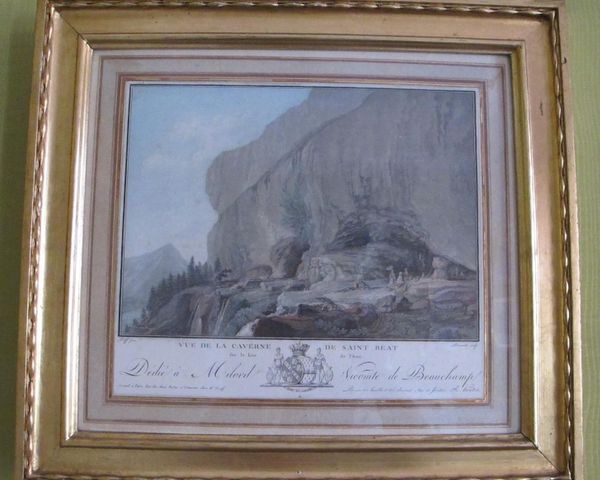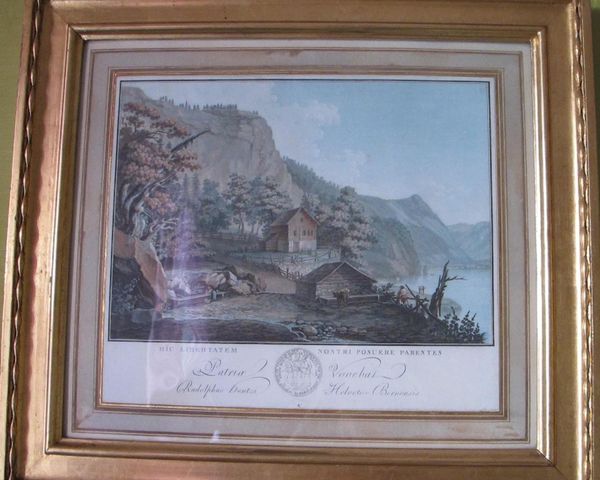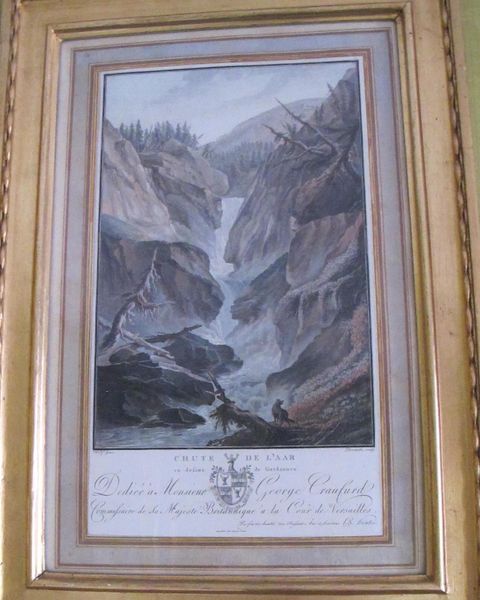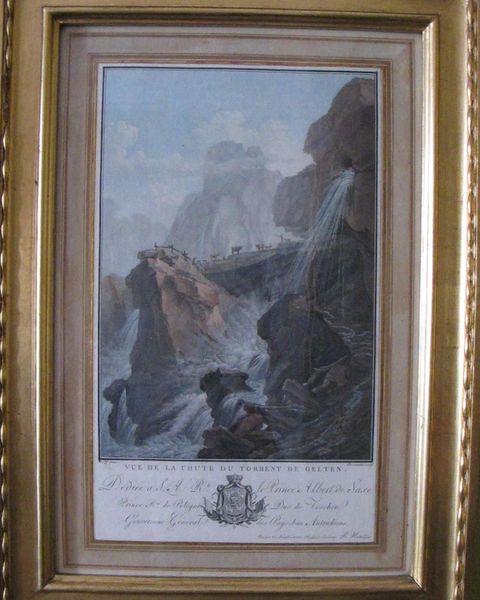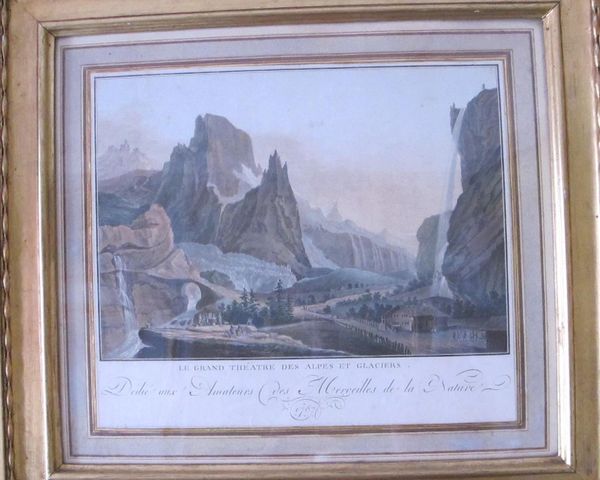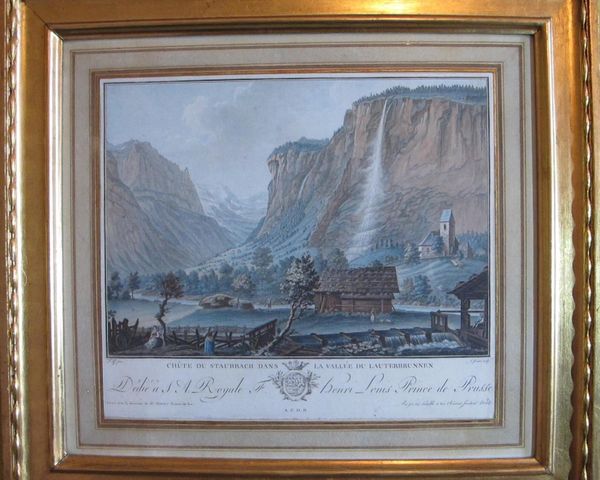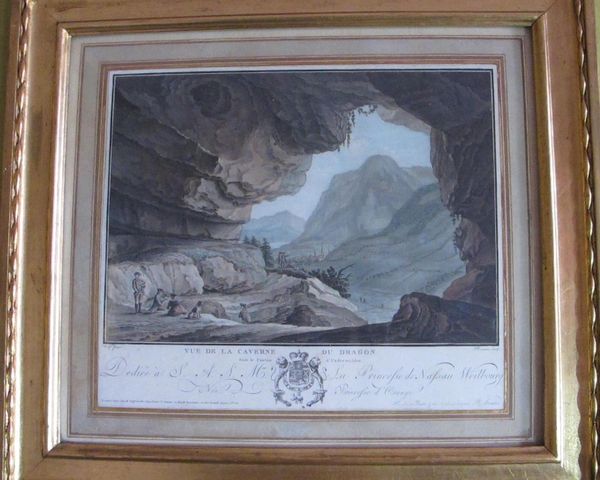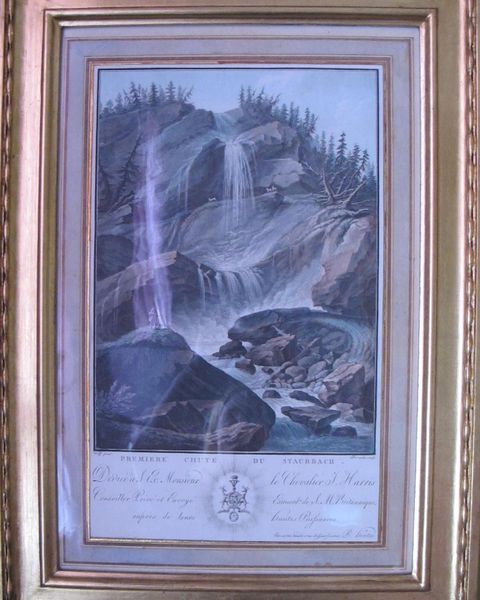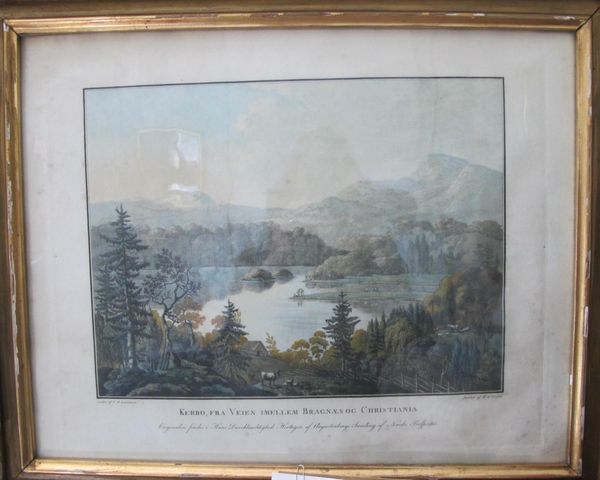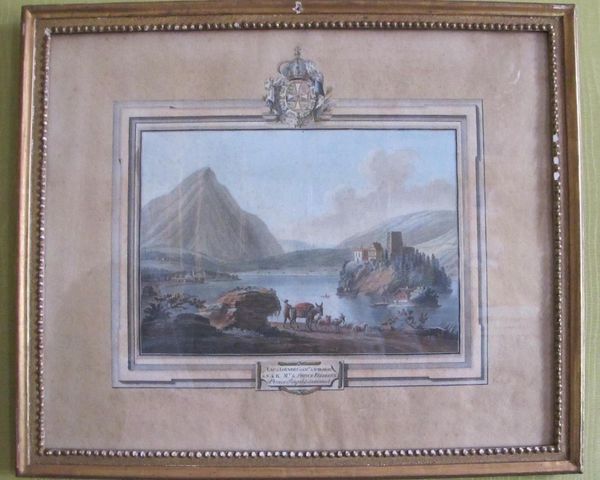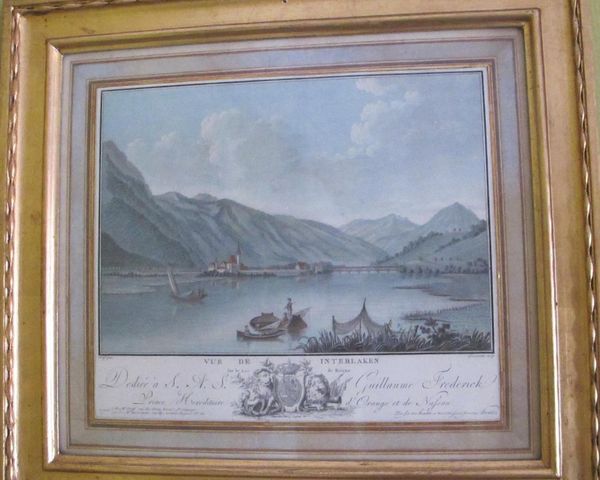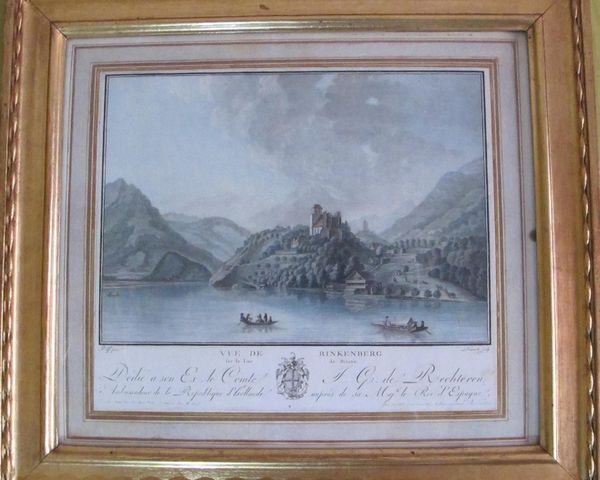
aquatint, print, watercolor
#
aquatint
#
water colours
# print
#
landscape
#
watercolor
#
romanticism
#
watercolour illustration
#
watercolor
Dimensions: 363 mm (height) x 303 mm (width) (netto)
Curator: Before us is Charles Melchior Descourtis' "Seconde chute du Staubach," an aquatint print rendered with watercolor, dating back to the 18th century. Editor: It evokes such a feeling of… hushed awe. The cascading waterfall dominates the composition, a fragile white ribbon against that imposing cliff face. The entire scene is imbued with quiet power, would you agree? Curator: Absolutely. Waterfalls, particularly during this period, held significant cultural weight. The visual representation can be traced to earlier tropes within the picturesque and sublime traditions that reflected ideas related to concepts of freedom and danger as well. Think about the rise of the natural sciences and Romanticism: Artists engaged with landscapes that illustrated particular ideological meanings. Editor: And the Staubbach itself carries that legacy; it becomes this symbol of untamed natural beauty and force, with implications for individual liberty during revolutionary times. The inclusion of that dedicatory inscription reinforces a connection with enlightened patrons as well, doesn't it? The image speaks to something larger about social relationships during the eighteenth century. Curator: Precisely! Dedications like this reflect patronage systems of the time and allow art historians insights into power dynamics as well, and the choice to dedicate the piece specifically to someone holding rank suggests even broader political affiliations within Europe itself— it’s hardly simply the beauty of the Swiss countryside that Descourtis intended to communicate here through an aesthetic appreciation of nature... Editor: One can also trace something profound related psychological aspects when confronting images evoking raw force; a person feels simultaneously vulnerable and powerful contemplating the same thing as the image. It plays out beautifully across compositional space—notice the almost insignificant figure standing near base the falls; their mere presence throws nature into scale allowing greater personal access the larger allegory within… Curator: I find myself constantly fascinated when artworks such as this piece remind one how even something seemingly apolitical reveals broader sociopolitical contexts woven tightly with visual conventions, and then further how its cultural position reverberates across history affecting audiences who engage such symbols today in wholly unexpected ways. Editor: Indeed, from a perspective considering what constitutes the sacred—in Descourtis’ vision one might locate something fundamentally elemental, powerful, and capable wonder capable both creating beauty destroying everything—making a person's inner reality that much more potent if internalized fully… It remains quite staggering.
Comments
No comments
Be the first to comment and join the conversation on the ultimate creative platform.
